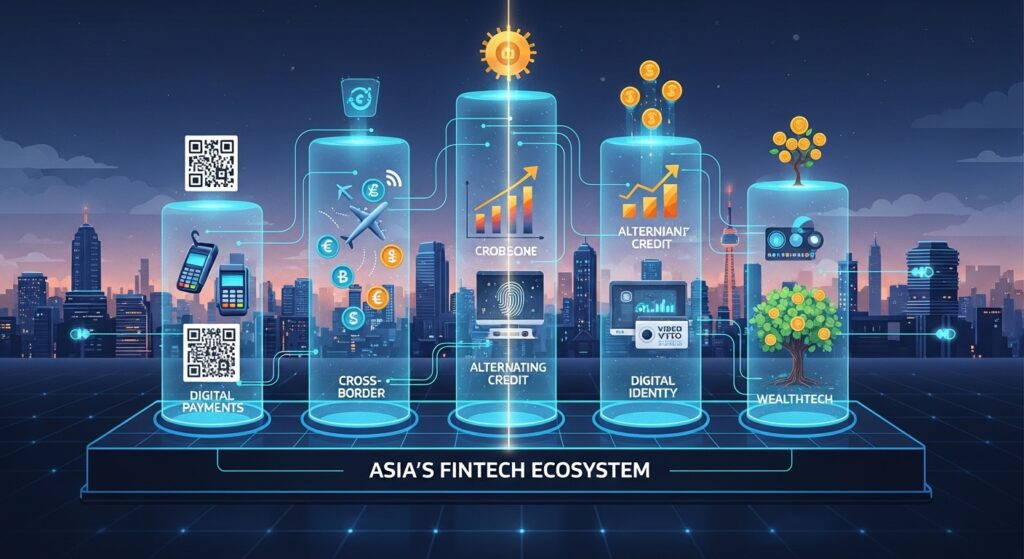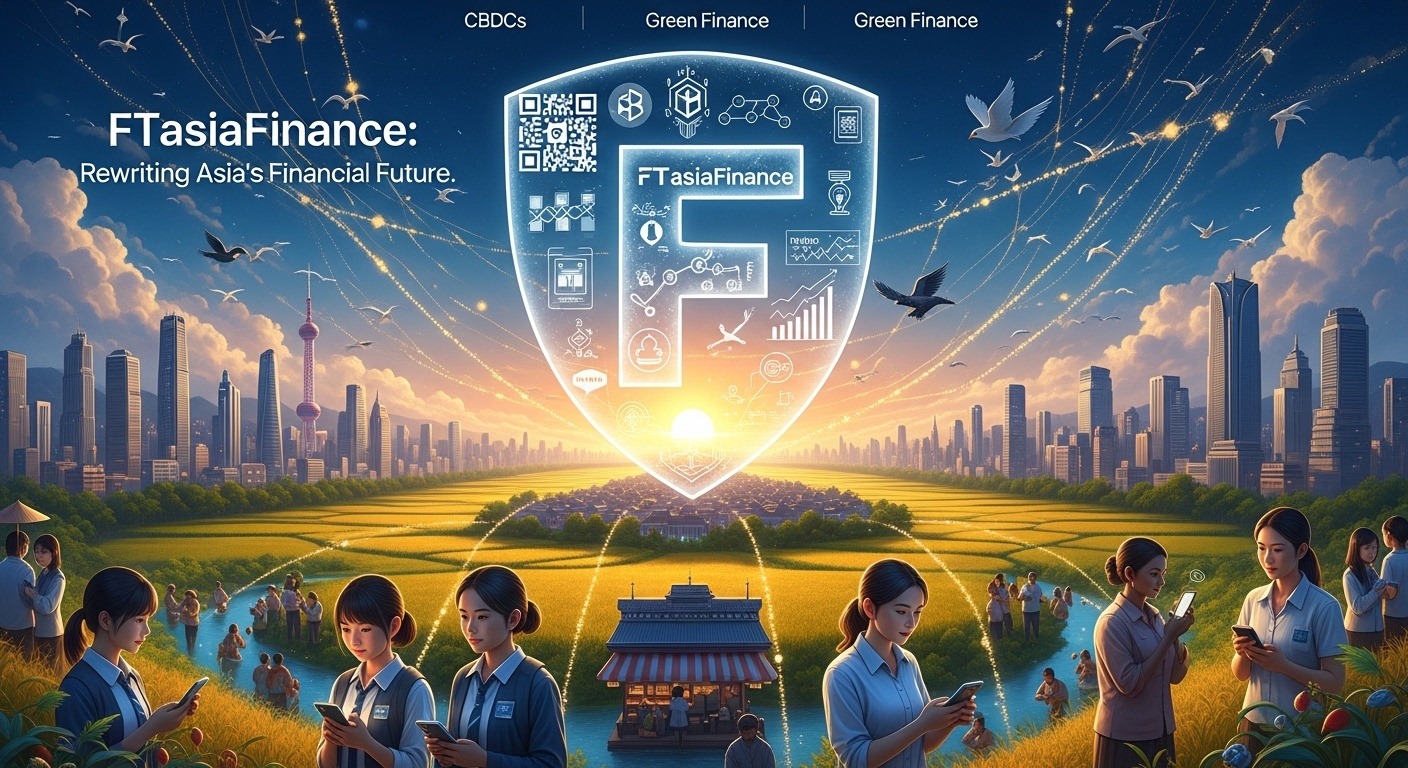Asia’s fintech boom is rewriting the rules of modern finance. From mobile payments and digital identity to alternative lending and real-time settlements, the region has become the world’s most dynamic financial technology market.
Within this rapidly evolving landscape, the FTasiaFinance business model represents a new blueprint for how digital finance can operate in a diverse, fast-growing, and highly mobile environment. Far from being just another fintech product, FTasiaFinance reflects what the next generation of financial services in Asia is becoming integrated, data-driven, and deeply customer-centric.
This guide explores the FTasiaFinance business, its strategic foundations, its technological strengths, and the market forces shaping its future. It is designed to provide both professionals and curious readers with a clear, authoritative understanding of the company’s role in Asia’s financial transformation.
What Is FTasiaFinance? Understanding Its Mission and Market Identity
The FTasiaFinance business represents a new kind of financial platform positioned at the intersection of digital payments, cross-border finance, and financial inclusion. It focuses on delivering services that fit the realities of APAC’s diverse markets from highly connected hubs like Singapore and Hong Kong to fast-digitizing economies such as Indonesia, Vietnam, and the Philippines.
Why Asia Is the Ideal Market for FTasiaFinance
Multiple factors make Asia uniquely suited for fintech disruption:
- Mobile-first population: In Southeast Asia alone, smartphone adoption continues to rise, with several markets surpassing 80% penetration.
- Large unbanked population: According to the World Bank, more than 70% of adults in some ASEAN markets remain unbanked or underbanked.
- Government-led digitalization: Programs like India’s UPI, Singapore’s digital identity (Singpass), and Hong Kong’s FPS have normalized real-time digital finance.
- Rapid shift to cashless payments: QR codes, digital wallets, and super apps have become mainstream across East and Southeast Asia.
The FTasiaFinance business aligns naturally with these trends, building services that scale across markets while adapting to local regulatory frameworks and consumer behavior.
The FTasiaFinance Business Model: Core Pillars and Strategic Impact

The company operates on a multi-layered digital model built around interoperability, cross-border connectivity, and alternative data. Its approach reflects the broader move across Asia from traditional banking to modular, API-driven financial services.
Core Pillars of the FTasiaFinance Business Model
1. Digital Payments Infrastructure
FTasiaFinance focuses on frictionless payments across merchants, consumers, and small businesses.
Key features typically include:
- QR-based transactions
- Wallet-to-wallet transfers
- Merchant acceptance tools
- Integration with national real-time payment rails
2. Cross-Border Transactions
Asia’s cross-border payment market is one of the world’s largest due to migrant remittances, e-commerce, and business trade routes.
FTasiaFinance aims to reduce:
- High fees
- Slow settlement
- Currency friction
- Manual compliance checks
3. Alternative Credit & Micro-Lending
By analyzing behavioral data, transaction patterns, and alternative financial footprints, FTasiaFinance provides credit access to customers with limited traditional histories.
4. Digital Identity & KYC Innovation
Technologies such as biometric login, video KYC, and digital ID verification help simplify onboarding while maintaining regulatory compliance.
5. WealthTech & Micro-Investing Tools
Growing middle-class participation in investing is reshaping Asian markets. FTasiaFinance supports:
- Low-minimum wealth products
- Automated portfolios
- Micro-savings
- ESG-aligned investment options
How FTasiaFinance Addresses Asia’s Biggest Financial Pain Points
Asian fintech ecosystems share several common structural challenges. The FTasiaFinance business model directly addresses many of them.
✔ Financial Inclusion Gaps
Millions across APAC lack access to traditional banking due to limited documentation or geographic barriers. FTasiaFinance leverages mobile-first solutions and alternative data to bridge this gap.
✔ High Remittance Fees
Migrant workers in Southeast and South Asia often pay high transfer fees. Digital routing and settlement engines help reduce transaction costs.
✔ Legacy Infrastructure
Many traditional banks operate on outdated systems. FTasiaFinance uses cloud-native architecture, enabling faster scaling and lower operating costs.
✔ Fraud & AML Risks
Enhancements like behavioral biometrics, transaction scoring, and AI-based anomaly detection improve security without slowing user experience.
Inside the FTasiaFinance Technology Stack
The technological backbone of the FTasiaFinance business is built around four major pillars: AI, blockchain, digital identity, and cloud/edge computing.
AI and Alternative Data for Smarter Credit Decisions
Artificial intelligence enables more inclusive lending by analyzing:
- Purchase histories
- Mobile usage patterns
- Cashflow fluctuations
- Behavioral biometrics
As noted by several fintech analysts in APAC, alternative data has become essential to serving thin-file customers especially in Indonesia, Vietnam, and the Philippines.
Expert Insight
Dr. Lin Mei, an AI researcher specializing in financial analytics, notes:
“AI-driven alternative data models are reducing risk for lenders while expanding access for millions who previously had no credit footprint.”
Blockchain and Smart Settlement
Blockchain plays an increasingly useful role in:
- Cross-border settlement
- Transparency
- Compliance automation
- Tokenized asset workflows
Many APAC regulators as MAS and HKMA support controlled use cases through regulatory sandboxes.
Digital Identity & Biometric Authentication
With nations like Singapore, India, and Malaysia adopting robust digital ID frameworks, fintechs can streamline:
- Customer onboarding
- Risk scoring
- Anti-fraud processes
Video KYC and face authentication are now standard alternatives to paper-based verification.
Cloud & Edge Computing
To support real-time finance at scale, the FTasiaFinance business uses:
- Cloud-native infrastructure
- Edge computing nodes for low-latency processing
- Region-based data sovereignty controls
This ensures faster services while meeting local compliance requirements.
FTasiaFinance’s Regional Influence Across the Asia-Pacific
The FTasiaFinance business operates in one of the world’s most diverse fintech environments. Each region contributes different opportunities.
Southeast Asia: The Growth Engine
Countries such as Indonesia, Vietnam, and the Philippines are seeing accelerated adoption of:
- E-wallets
- QR payments
- Micro-investments
- Digital lending
These markets’ young, mobile-native populations make them ideal for FTasiaFinance’s expansion.
East Asia: The Innovation Hubs
Singapore, Hong Kong, South Korea, and Japan drive fintech regulation and infrastructure development:
- Open banking frameworks
- Regulatory sandboxes
- Advanced payments rails
- High merchant acceptance rates
FTasiaFinance benefits from these ecosystems to test and scale new solutions.
South Asia: The Scale Frontier
India’s UPI infrastructure and digital ID system represent the world’s largest real-time payment architecture. South Asia offers enormous scale for digital financial tools.
Market Trajectory: Growth, Data Trends & Competitive Positioning
While specific financial results for FTasiaFinance are not publicly listed, the broader APAC fintech industry provides a reliable benchmark.
Asia’s Fintech Market Trends (Based on Public Industry Reports)
- APAC continues to account for some of the world’s highest mobile wallet usage rates.
- Real-time payment adoption in Singapore, Malaysia, Thailand, India, and China leads global rankings.
- Digital lending remains one of the fastest-expanding segments in Indonesia and Vietnam.
- WealthTech platforms see rising participation among younger demographics.
Key Growth Drivers for FTasiaFinance Business
- Cross-border payment demand
- Cloud-based financial architecture
- SME financing opportunities
- Government-led fintech support
- Expansion of e-commerce ecosystems
User Experience: What Makes FTasiaFinance Stand Out
In Asia, user experience is often the deciding factor for adoption.
Mobile-First & Low-Bandwidth Optimization
FTasiaFinance designs interfaces that work reliably even on:
- budget smartphones
- fluctuating data speeds
- rural networks
This is essential for serving emerging markets.
Trust, Security & Transparency
Security practices include:
- Multi-factor authentication
- Biometric verification
- Real-time fraud alerts
- Clear pricing structures
By prioritizing security and transparency, FTasiaFinance builds long-term user confidence.
Strategic Partnerships Driving FTasiaFinance’s Growth
Fintech success in APAC depends heavily on collaboration.
Cross-Border & Merchant Partnerships
FTasiaFinance integrates with:
- regional payment rails
- e-commerce platforms
- merchant networks
- logistics and travel apps
These partnerships support seamless consumer journeys.
Work with Regulators & Financial Institutions
Regulatory openness in Singapore and Hong Kong encourages innovations such as:
- digital KYC
- cross-border payment trials
- open banking experiments
FTasiaFinance benefits from participating in these ecosystems.
Cloud & Infrastructure Collaboration
Partnerships with regional cloud providers support:
- data security compliance
- local data hosting
- faster scaling across markets
Future Outlook: Where the FTasiaFinance Business Is Heading
The future of fintech in Asia is shaped by several key trends.

Voice-Based & Conversational Banking
AI-driven voice interfaces are becoming more common in markets with strong mobile adoption.
Embedded Finance
Financial services are increasingly integrated into:
- e-commerce
- ride-hailing
- gig economy platforms
FTasiaFinance is well-positioned to build API-driven services in this area.
CBDCs & Cross-Border Payment Innovation
Several Asian central banks are testing cross-border CBDC frameworks. These experiments could reshape settlement systems and create new opportunities for FTasiaFinance.
Climate & Green Fintech
ESG-aligned lending and carbon tracking tools are gaining traction.
FTasiaFinance could integrate:
- green investment portfolios
- sustainable credit scoring
- climate risk analytics
Real-World Impact: FTasiaFinance in Action
Below are examples illustrating the type of impact a business like FTasiaFinance can create across APAC.
Micro-Lending for MSMEs in Indonesia
Digital loans help small merchants access working capital quickly, bypassing slow traditional processes.
QR Payment Expansion in Vietnam
Merchants gain low-cost, instant payment acceptance important in cash-dominant markets.
Digital Identity Adoption in Singapore
Faster onboarding reduces friction for both consumers and businesses.
How Businesses Can Partner with FTasiaFinance
Companies across APAC can leverage the FTasiaFinance business by utilizing:
- Payments APIs
- Merchant solutions
- Cross-border settlement tools
- Digital identity verification modules
- Risk scoring & analytics services
These tools enable SMEs and enterprises to expand digitally without building complex infrastructure from scratch.
Conclusion: Why FTasiaFinance Matters to Asia’s Financial Future
The FTasiaFinance business offers a powerful example of how the next generation of fintech in Asia is evolving. By embracing mobile-first design, alternative data, cross-border infrastructure, and strong regulatory cooperation, FTasiaFinance embodies the region’s shift toward accessible, intelligent, and interconnected finance.
Asia is not just adopting fintech it is redefining it.
And platforms like FTasiaFinance are leading the charge.



